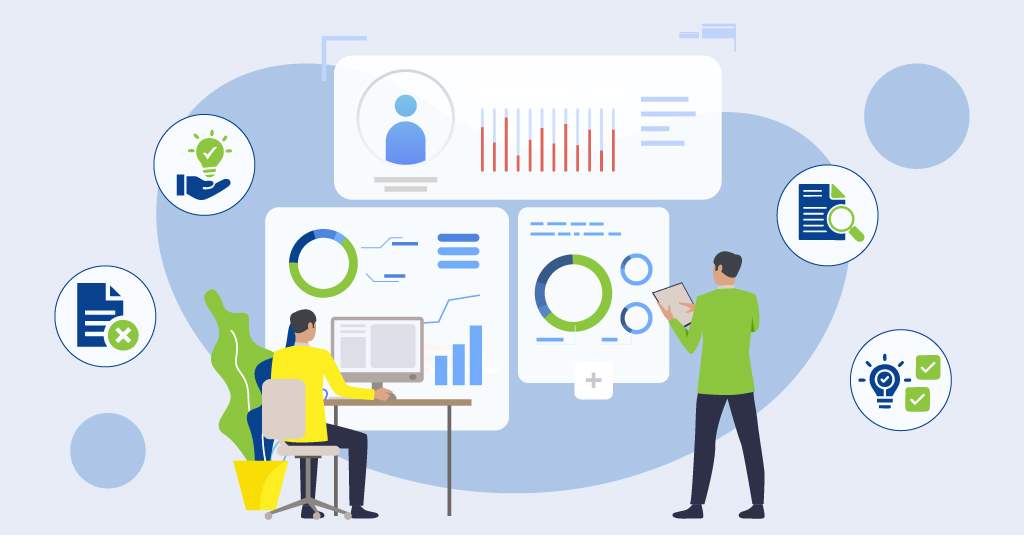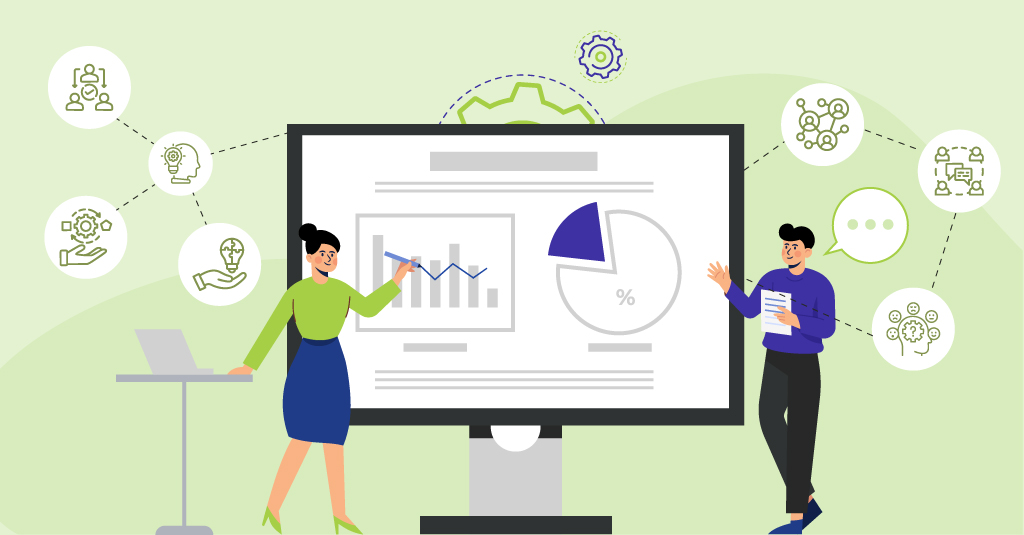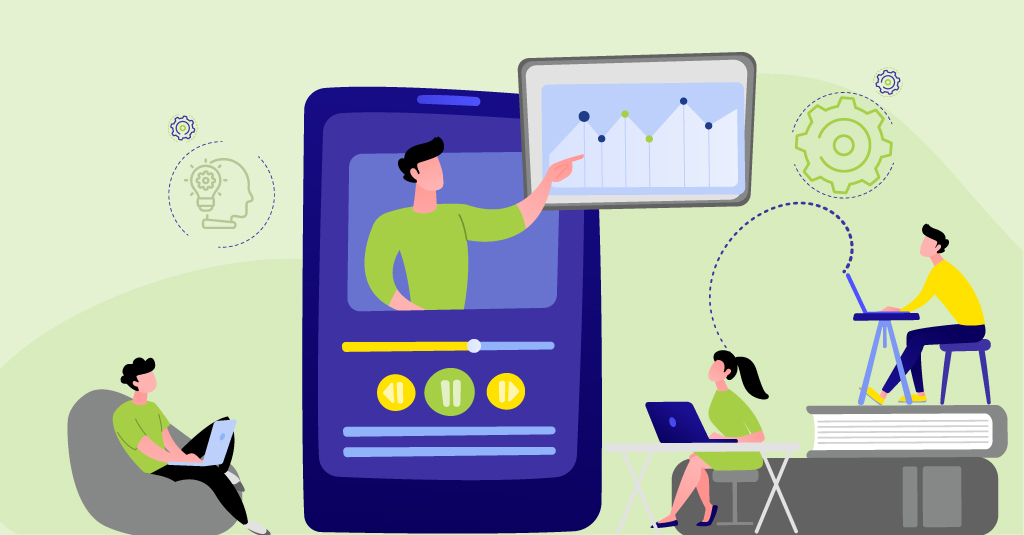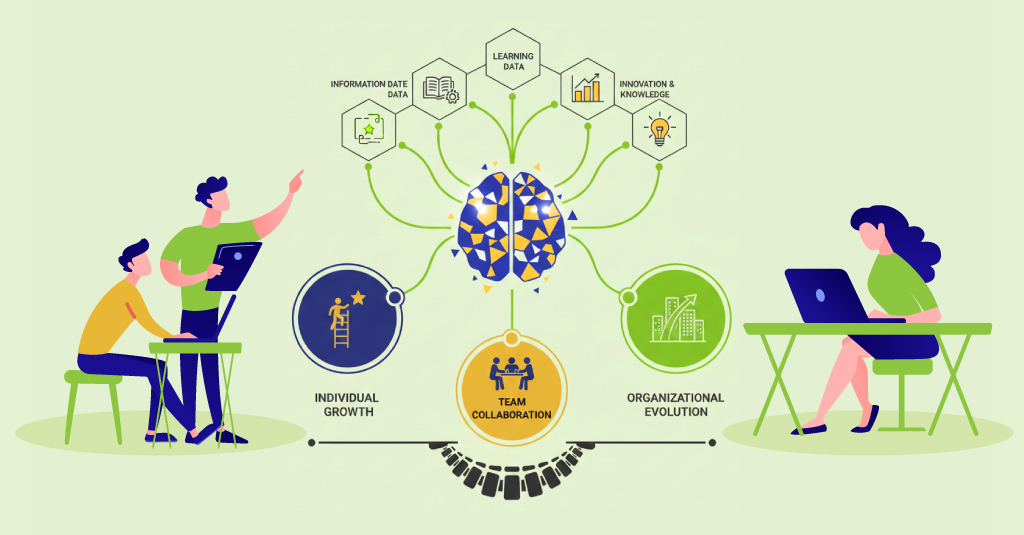Did you know that over 70% of U.S. enterprises claim to use personalized learning, yet fewer than one in three can prove it improves performance.
The term has become common in boardroom slides but rare in verified outcomes. Most learning systems still distribute training by role title, not capability signal. Relevance is assumed, not measured.
That gap between personalization in theory and practice is widening as AI enters the process. Algorithms can now build learning paths that adjust continuously- analyzing performance data, project context, even skill decay patterns. But few organizations have the data integrity or workflow design to make those systems reliable at scale.
The U.S. market sits at a midpoint: early adoption, uneven maturity, fragmented evidence. Personalization is no longer about building unique content; it is about building logic- the operational model through which learning aligns with business change.

Why Static Learning Paths No Longer Suffice
Most enterprise learning programs in the U.S. still run on rigid assignment logic: frontline sales reps are enrolled in the “Consultative Selling” module, while project managers are routed through a fixed “Leadership Essentials” track- regardless of experience or current role demands.
The assumption is that learning needs are stable. They are not.
When content is assigned purely on role title, the system ignores prior experience, current capability gaps, project context, and future role shifts. A senior sales rep with ten years’ tenure automatically gets the same module as an entry-level rep. The expert may waste time; the novice may still lack critical foundational skills.
Business contexts shift faster than learning catalogs. New tools, regulations, and customer behaviors emerge. Static modules are slow to change. The fixed-path model can leave organizations reacting rather than adapting. The consequence: lower engagement, longer time-to-competency, and mis-aligned learning budgets.

How Personalized Learning Paths Work in Practice
In the more advanced models, enterprises move from static to adaptive by using two broad approaches: rule-based engines and AI-driven systems.
Rule-based engines use explicit business logic. For example: if tenure < 12 months and role = sales, then assign “Onboarding Plus Advanced Sales” bundle. They are transparent, simple to audit, but inflexible for thousands of roles or complex learner profiles.
AI-driven systems ingest broader variables: learner profile, prior training, performance ratings, current projects, peer benchmarks, skills decay, even engagement signals. Based on those inputs the engine recommends or assigns the next best micro-module. A U.S. enterprise pilot found that tailored recommendations increased learner usage by 14 % compared to baseline training programs.
In practice the flow looks like: role metadata + performance/skill inventory + learning history > algorithm evaluates gaps > system pushes micro-units aligned to role/skill/project > learner progresses > system monitors outcomes and adjusts. The path is branching, dynamic rather than linear.
Personalized systems don’t just segment by job title; they adjust learning priorities across functions and experience levels, supporting adaptive learning for diverse teams as business needs shift.
Relevance improves. Time-to-competency shortens. But only for organizations with data, content and systems aligned.

Strategic Factors for U.S. Enterprise Deployment
For senior HR or L&D leaders exploring personalized learning, several strategic-operational factors determine whether the effort pays off.
-
Data readiness: Personalization demands clean learner profiles, defined competencies, prior learning records, performance metrics. Many U.S. enterprises suffer from data silos: LMS logs separated from HRIS, skill inventories fragmented, inconsistent role naming. Without a unified learner record the algorithm defaults to generic paths.
-
Business-outcome alignment: The real test of personalization is not engagement rates. It’s whether it moves a number that management actually cares about. Maybe faster onboarding. Maybe fewer safety incidents. Unless that target is visible, the system becomes another digital exercise with no weight behind it.
-
Change management and learner experience: Once paths begin to adapt, the program stops feeling uniform. Two people in the same role might not see the same course list. That creates questions. In U.S. enterprises, where standardization is often treated as fairness, it can trigger pushback. Transparency helps- not just about data, but about intent.
-
System integration: Personalization engines must link to the LMS, HRIS, talent systems and content libraries. U.S. enterprises often have legacy systems. If the engine is a bolt-on without seamless integration, you risk data gaps, user friction and low adoption.
-
Scalability and content architecture: Starting small works. The challenge comes later- hundreds of learners, different roles, legacy courses with no tagging. Without a modular structure and consistent metadata, the engine cannot assemble paths fast enough to matter.
-
Ethics, privacy and governance: U.S. enterprises operate under multiple privacy rules, but regulation alone is not the issue. When an algorithm influences access to development, transparency becomes an operational control point. Bias review, documentation, and accountability lines have to be designed in, not bolted on later.

Static vs. Personalized Paths: A Comparative View
Here is a simplified comparison focused on U.S. enterprise context:
-
Content assignment: Static = all learners in Role X receive Module A, Module B, Module C. Personalized = module allocation tailored based on prior knowledge, current project demand, individual gaps.
-
Time-to-competency: Static = fixed timeline for all; may deliver too much for some, too little for others. Personalized = pace and selection adapt; faster learners move ahead, slower ones get targeted support.
-
Engagement: Static = relevance may be low for many; drop-off risk rises. Personalized = higher relevance tends to boost engagement. For instance, 91 % of employees in one survey said they prefer training relevant to their role.
-
Operational complexity: Static = predictable rollout, lower upfront effort. Personalized = higher complexity (data, tagging, algorithm design) but higher potential efficiency (less irrelevant training, fewer retrains).
-
Business alignment: Static = indirect unless carefully configured. Personalized = designed to align with role, skill gap and business priority.
In U.S. companies dealing with rapid role changes, high role diversity and competitive pressure, personalized learning offers stronger strategic fit- with the caveat of required readiness.

Evidence From U.S. Enterprise Practice
Recent industry commentary provides supporting signals. In 2024–25 U.S. organizations reported increasing uptake of AI in learning technology. Over the past two years, AI has started to move from pilot to infrastructure inside learning systems. Adoption numbers vary by source, but most show a clear rise- single-digit percentages a year ago, closer to a quarter of large firms now using some form of AI-enabled training tool.
Training budgets, however, tell a different story. Spending in 2023 hit record levels- a little over $100 billion– before tightening the following year. Some organizations paused expansion, focusing instead on internal proof. The signal is mixed: enthusiasm is high, investment more selective. In practice, most U.S. enterprises are still testing scope and governance before scaling. It looks less like a wave, more like careful positioning.

Risks and Limitations Worth Noting
There are non-trivial risks in implementing personalized learning at enterprise scale. Bias and fairness: If algorithms use historical performance ratings or role assignments that reflect previous inequities, the personalized system may amplify them. L&D teams must monitor outcomes across demographics.
-
Content governance strain: More branching paths and micro-modules mean more versions to maintain, tag, update. Without strong governance the learning ecosystem may fragment and quality degrade.
-
Learner confusion or resistance: Some learners prefer a known path rather than one that adapts. If the rationale for difference is unclear, it can feel inconsistent or unfair.
-
ROI attribution complexity: When each learner follows a unique path, comparing outcomes across cohorts becomes harder. Measurement frameworks must be robust and role-specific.
Integration and change fatigue: Personalization often entails new processes, systems and workflows. If not managed, user experience suffers and adoption lags.

How Upside Learning Helps U.S. Enterprises Scale Personalized Learning
Upside Learning brings over 20 years of enterprise-learning experience and a deep track record in custom solutions. Their approach supports U.S. enterprises moving from reactionary to adaptive learning models.
They partner early: consulting on role segmentation, competency mapping and content taxonomy- prerequisites for effective personalization. They build micro-modular content with metadata (role, skill, difficulty, prior-knowledge) so engines can assemble dynamic paths. Their services include integration planning with LMS/HRIS ecosystems. Upside Learning also emphasizes analytics and measurement frameworks for learning outcomes, helping clients link personalized paths to business metrics.
For U.S. enterprise clients, this means fewer unknowns. Upside Learning does not stop at pilots. The team sits inside the process- mapping roles, cleaning data, setting up how ownership and sign-off really work. It is less about launching a tool, more about making the system hold together once it goes live.
Contact Upside Learning to see how enterprise learning personalization can work in your context.
FAQs: Custom vs. Off-the-Shelf eLearning
If your workflows, tools, or brand vibe are one-of-a-kind- or if behavior change matters- custom’s your cheat code.
Yep, upfront it’s lighter on the wallet. But for long-term wins and role-specific skills? Custom flexes harder ROI.
For sure. Start with off-the-shelf for the basics, then sprinkle in custom modules where it really counts.
Depends on how ambitious you get- usually weeks to months. Planning ahead keeps you from sweating deadlines.
For general topics, yeah. For real-life scenarios or changing habits? Engagement can ghost you.
Totally. You own the content, so edits, tweaks, or upgrades? All yours.
Custom can adapt paths, toss in interactive exercises, and mix multimedia to match every brain type.
Mostly basic stuff- completion rates, quiz scores. Custom digs deeper: behavior, skill gaps, all the good analytics.
Quick wins? Off-the-shelf. Lasting change? Custom. Pick your lane- or flex both.
Yep. They make it seamless- fast deployment, tailored experiences, or a mashup.

Pick Smart, Train Better
Picking off-the-shelf or custom eLearning? Don’t stress. It’s really about your team, your goals, and the impact you want. Quick wins? Off-the-shelf has you covered. Role-specific skills or behavior change? Custom eLearning is your move.
Upside Learning makes both options effortless. Whether it’s ready-to-roll courses or fully tailored experiences, we handle the heavy lifting- interactive modules, adaptive paths, branded visuals, and analytics that tell you something. No wasted time, no generic content- just learning that sticks.
Ready to level up your team’s learning game? Connect with Upside Learning today and see how we make training fast, engaging, and results-driven. Your team deserves training that works- and we deliver.
















